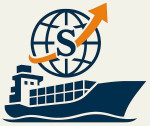sarvayatradexllp.acc@gmail.com - GST NO. : 24AFIFS8408K1ZL
Steps involved in Customs Clearance
- Submission of Documents: Importer/exporter submits required documents, such as commercial invoices, bills of lading, and certificates of origin.
- Inspection and Verification: Customs authorities inspect and verify the goods, documents, and declarations.
- Duty Calculation and Payment: Customs authorities calculate and collect duties, taxes, and other charges.
- Release of Goods: Once all requirements are met, customs authorities release the goods to the importer.
Documents Required
- Commercial Invoice: Detailed invoice containing information about the goods.
- Bill of Lading: Document issued by the carrier, containing details about the shipment.
- Certificate of Origin: Document certifying the country of origin of the goods.
- Customs Declaration: Document submitted by the importer/exporter, containing details about the goods.
Types of Customs Clearance
- Express Clearance: Expedited clearance for low-value or non-restricted goods.
- Standard Clearance: Regular clearance process for most goods.
- Bonded Clearance: Clearance for goods stored in bonded warehouses.
Customs Clearance Procedures
- Automated Broker Interface (ABI): Electronic system for submitting customs entries.
- Automated Manifest System (AMS): Electronic system for submitting cargo manifests.
- Single Window System: Integrated system for submitting customs declarations and other documents.
Benefits of Efficient Customs Clearance
- Reduced Dwell Time: Faster clearance reduces the time goods spend in customs custody.
- Lower Costs: Efficient clearance minimizes demurrage, detention, and other costs.
- Improved Compliance: Accurate and timely submissions reduce the risk of non-compliance.




